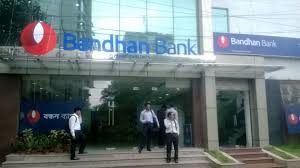Retail investors might soon be allowed to participate in the initial public offerings (IPOs) of start-ups with the Securities and Exchange Board of India (Sebi) planning to scrap the Institutional Trading Platform (ITP) for these firms. The move comes after the platform failed to witness a single listing since it was launched last year.
Sources privy to the development said instead of providing an exclusive platform for start-ups, Sebi is now planning to allow start-ups to list on the regular platform. However, some relaxations would be provided in terms of disclosures and compliance norms. Sebi is planning to amend both the Issue of Capital and Disclosure Requirements (ICDR) and Listing Obligations and Requirements (LODR) regulations, accordingly.
As per the regulations relating to Capital Raising and Listing on Institutional Trading Platform regulations for start- ups, only institutional investors and high-net worth individuals (HNIs) are allowed to trade on ITP and the minimum ticket size was `10 lakh. Retail investors were not allowed to invest in such issues as the markets regulator felt small investors should be safeguarded against a higher level of risks associated with the platform.
Several start-ups have expressed concerns about the liquidity on ITP. Further, not even a single company has filed for an IPO on the special platform till date. Hence, Sebi wanted to review the regulations and address the concerns raised by the start-ups,” said a member of Sebi Primary Markets Advisory Committee (PMAC).
Allowing start-ups to list on the regular platform would also address the concerns regarding the minimum institutional ownership clause in the regulations. As per the current regulations, to be eligible to raise funds via an IPO, 50% of the pre-issue capital of the company must be held by qualified institutional buyers (QIBs). In the case of e-commerce and technology start-ups, 25% of the pre-issue capital should be owned by institutional investors.
In August 2015, the regulator had announced a new set of listing regulations for start-ups operating in the e-commerce space in sectors such as information technology (IT), data analytics and biotechnology.The regulations provided several relaxations to start-ups keeping in mind the unique nature of the industry including removal of caps on the money spent by start-ups on publicity and advertisements as they need to spend much more for such purposes.
Infibeam, an e-commerce company that went for an IPO in the current calendar year, chose to list on the main board instead of the ITP. Although the company filed its draft prospectus with the regulator before the ITP was announced, the company had a choice to migrate, subsequently. According to investment bankers, the company didn’t choose ITP because of concerns about the platform.







